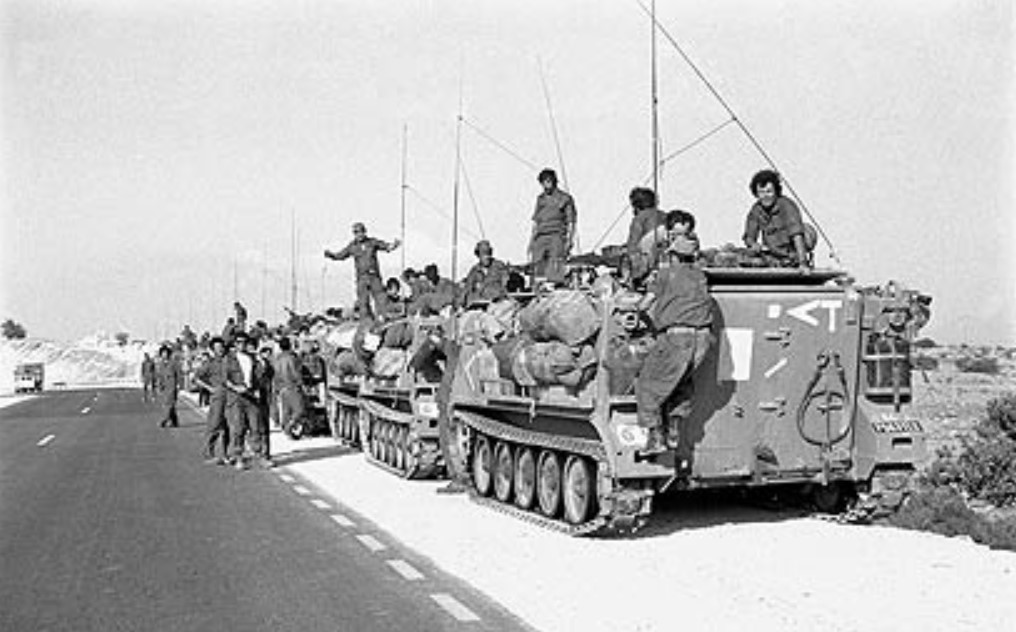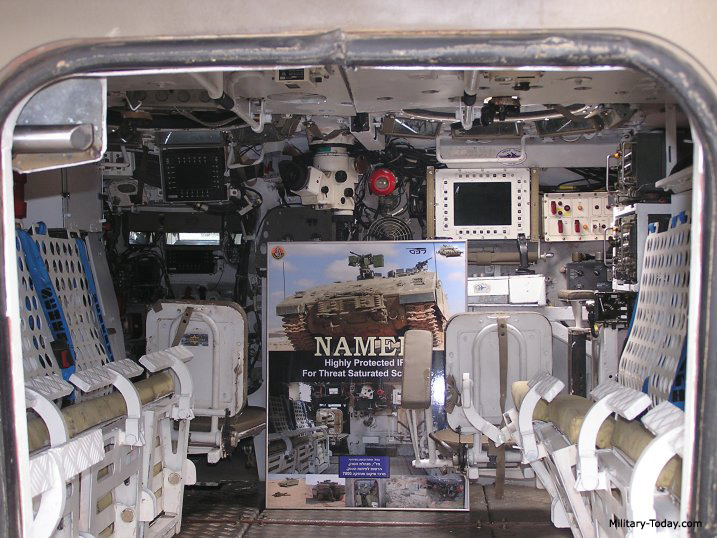Hello! How are you? Hope you’re doing ok.
I’ve built a thread to look at Namer, a heavy armoured personnel carrier (APC) that is in service with the IDF. You might have heard of it recently as 11 IDF personnel were reportedly killed in one when an ATGM hit their vehicle.
I’ve built a thread to look at Namer, a heavy armoured personnel carrier (APC) that is in service with the IDF. You might have heard of it recently as 11 IDF personnel were reportedly killed in one when an ATGM hit their vehicle.

I have some thoughts on this at the end. If you don’t want to read that far; these things can happen to even the best-protected vehicles, a lot depends on the munition that hit it, and what was inside the vehicle.
Development: Maj Gen Tal, who oversaw development of the Merkava, decided that a heavy APC was needed in the 1980s, he had observed during Israel’s wars that infantry needed more protection than tanks. Interesting, right? 

His reasoning was that a tank could use the range of its main armament to keep enemies at bay. Whereas infantry have no choice but to get close, therefore they need greater protection. The IDF agreed and development started, spurred on by the 1982 war with Lebanon.
The result was Achzarit, a heavy APC based on T-55s captured in 1967 and 1973. They were modified in several ways and entered service in 1987. They provided protection for a crew of 3 and 7 dismounts. Fully loaded they weight 44t – compare this with the 36t of a T-55 with turret! 

Armour was added to the sides and roof and the diesel fuel tanks at the rear of the dismount compartment provide additional protection – as does the engine on the other side. Achzarits were observed operating in groups of 3 by Jane’s reporters.
They would assume mutually supporting positions and approach objectives from random angles, dispensing infantry like sticks of paratroopers as they went. Achzarits struggled to keep up with Merkavas, which had greater power-to-weight ratio. 

They were revised, but development had started on the Namer and the first prototype produced in 2004 using a modified Merkava Mk 1. It was field tested in Gaza and then refined, but the 2006 conflict with Hezbollah pushed it across the line.
The IDF’s infantry had shown a preference for advancing on foot in that conflict as they felt their vehicles attracted ATGM fire.
The first Namer based on a Merkava Mk 4 was released in 2008, and it entered service with the IDF the following year.
The first Namer based on a Merkava Mk 4 was released in 2008, and it entered service with the IDF the following year.

However, procurement slowed down because of budgetary constraints and shifting geopolitical realities. Then, in 2014 and Op Protective Edge, an M113 carrying 7 soldiers and explosives was hit by an ATGM. Interest in the Namer picked up and by 2021 270 had been delivered. 

Still here? Cool. Here’s some bits about its protection, I won’t dig into anything else for the sake of brevity.
The powerpack is at the front of the hull with the driver to the left, the commander behind the driver and the gunner to the right of the commander. It has space for 8 dismounts seated on two rows facing each other. 

The belly plate is bent (as opposed to welded) into a shallow v-shape to disperse explosive energy beneath the vehicle and increase blast resistance.
It carries a hefty suite of passive composite armour, which is distributed according to ‘battlefield findings;’
It carries a hefty suite of passive composite armour, which is distributed according to ‘battlefield findings;’
i.e., it is more evenly distributed around the sides, roof and rear instead of being disproportionately loaded on the front 60*. The roof armour is also thicker than standard, and the roof hatches kept to a minimum. You can sort of see how the armour is arranged here. 

Active protection is provided by Trophy – you probably know about that right? If not, here's a video:
The total weight of a Namer is 62t, compare this with the 65t of a Merkava Mk 4 and you get a sense of how much armour it’s carrying.
The total weight of a Namer is 62t, compare this with the 65t of a Merkava Mk 4 and you get a sense of how much armour it’s carrying.
The big difference is the more even distribution around the vehicle. During Protective Edge, a Namer was engaged with a 500kg offset IED, it drove away with scratched paintwork. The type also survived several ATGM and RPG strikes. 

So, how does an ATGM defeat such a heavily armoured vehicle? There’s a lot that isn’t known right now, so I’ll keep this general. ATGMs or RPGs used shaped charges are a wicked problem for any AFV. Have a look at these threads: and
https://twitter.com/Sam_Cranny/status/1415697130816159746
https://twitter.com/Sam_Cranny/status/1415956883056336897
The behind armour effects can be horrific if penetration is achieved. Spalling is bad, especially if no spall liner is present, which can lead to several casualties at once. There is also the risk of the jet striking something like explosives, as happened with the M113 in 2014. 

Can we say what happened to the Namer and its unfortunate crew? Not from where I am. But we know that no vehicle is invincible, and that generally speaking, lethality always has had an edge over survivability. A strike with a high casualty rate was therefore always a possibility.
We can say that a large warhead, as is common on ATGMs, would create a large and powerful jet. If it hit the sides or rear of the vehicle, even with greater armour there than is normal, it would have been hard pushed for any vehicle to prevent penetration. 

Thanks for reading this far - feel free to ask any questions.
• • •
Missing some Tweet in this thread? You can try to
force a refresh
















